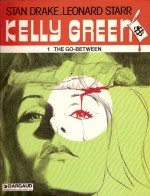
By Leonard Starr & Stan Drake (Dargaud International)
ISBN: 2-205-06574-2
After years of superb – if thematically anodyne – wholesome family comic strips, two of America’s most gifted graphic storytellers were given the chance to work on a more adult and potentially controversial feature with no creative restrictions; and the result was the second best female adventurer series in comics history.
Leonard Starr was born in 1925 and began his long and illustrious creative career in the Golden Age of American comic-books, before working in advertising and settling in the challenging arena of newspaper strips. He worked on Sub-Mariner, the Human Torch and the immensely popular but now all-but forgotten Don Winslow of the Navy during the 1940s, drew love stories for Simon and Kirby’s landmark Romance line and crime stories for EC, and freelanced extensively for ACG and DC Comics until he left the industry for Madison Avenue. He returned to graphic narrative in 1955 when he ghosted Flash Gordon.
In 1957 he created ‘On Stage’, a soap-opera strip starring aspiring actress Mary Perkins for the Chicago Tribune. He left the globally syndicated feature in 1979 to revive Harold Gray’s legendary Little Orphan Annie (which he continued until his retirement in 2000), simultaneously creating the series ‘Cannonball Carmody’ for Belgium’s Tintin magazine. An experienced TV scripter since 1970 Starr worked as head writer on Thundercats, and briefly returned to comic-books in the 1980s. He received the National Cartoonist’s Society Story Comic Strip Award for On Stage in 1960 and 1963, and their Reuben Award in 1965.
Stan Drake (1921-1997) was another vastly experienced cartoonist who began work in the 1940s. His two most famous series are the superbly compelling romantic drama-strip ‘The Heart of Juliet Jones’ (co-created in 1953 and initially written by Elliot Caplin) and the iconic ‘Blondie’ which he took over illustrating in 1984. He began his drawing career in the pulps, specifically Popular Detective and Popular Sports, before moving on to newly formed Timely Comics and The Black Widow. In 1941 he enlisted in the US Army. After the war he too worked in advertising until 1953 and Juliet Jones. In 1956 he narrowly survived the road accident that took the life of Alex Raymond, and was quickly back to work.
In the late 1970s he began Pop Idols – a syndicated series of celebrity biographies – whilst still working on Juliet Jones (which he left in 1989) and Blondie (which he drew until his death in 1997). During that incredibly productive time he still found the odd moment to work on Kelly Green – from 1982-1988 – and do the occasional job for Marvel Comics. To relax, he painted portraits of his cartoonist friends (now on display in the Comic Artist’s Museum in Sarasota, Florida). He received the National Cartoonists Society Story Comic Strip Award for 1969, 1970, and 1972 for The Heart of Juliet Jones.
Brave, competent, sexy, and divinely human, Kelly Green debuted in 1981 as a black and white serial in the legendary French magazine Pilote; a boldly contemporary antiheroic drama, with a deft, light tone and grimly mature themes. Within a year colour albums were flying off shelves across Europe, and eventually in the English speaking world, too.
Kelly Green is a stunning red-head who escaped a traumatic and mysterious past when she married Dan Green, a respected New York cop. But her comfortable world comes crashing down when he’s set-up by one of his own superiors and killed during a high-profile raid. Devastated, Kelly is pulled out of a suicidal depression by Spats Cavendish, Jimmy Delocke and the man-mountain called “Meathooks”; three career felons the straight-shooting cop had not only busted but then successfully rehabilitated.
Owing their new lives to the dead hero, the trio of honourable rogues take the widow under their collective wing, teaching her all the tricks of survival in a dirty world and even finding her a new occupation.
Hating the criminals that Dan fought and who finally got him, but despising more the corrupt police force that orchestrated his death, the grieving woman becomes a professional “Go-Between”, a paid intercessionary liaising between crooks and victims who don’t want police involvement. Apparently the job is completely legal and there’s never a shortage of clients…
This first case involves paying off a blackmailer and safely retrieving his damaging “evidence” for a prominent Miami millionaire, but in a dazzling blur of twists and counter-twists the job leads to the murderer of her beloved husband in a tense, terse thriller full of drama and action, and brimming with humour and good old fashioned style.
This beautifully executed crime thriller is still powerful, gritty stuff, and strictly for adults (it was made for France so there’s lots of lovingly rendered nakedness and nudity and even some unclothing), with copies of all volumes still readily available (if fetching rather high prices), so the persistent rumours of a full revival of the character next year are most welcome – and eagerly anticipated.
© 1982 Dargaud Editeur. All Right Reserved.


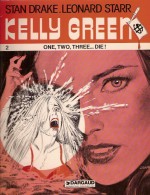
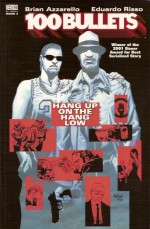

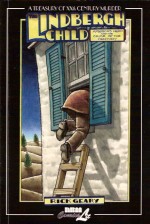
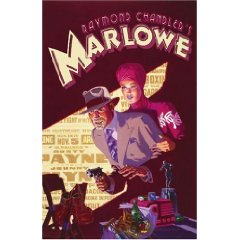
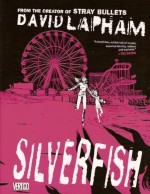
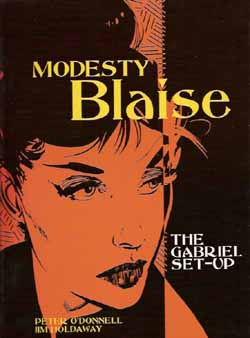 Â
 
